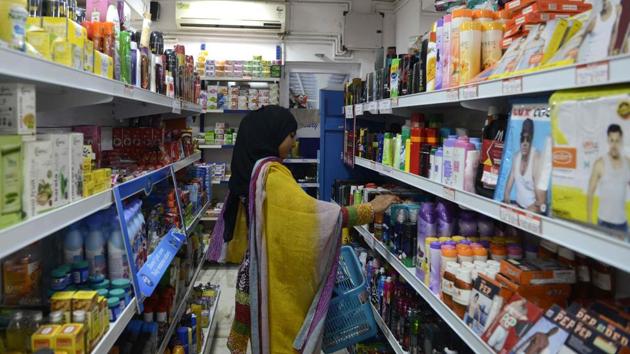If the Indian economy grew 7% in demonetisation quarter, where is the party?
The government could have added an advisory to the estimates, saying these may see revisions in the time to come. It also needs to be candid in acknowledging the impact of demonetisation as reflected in other sets of data. Sadly, that is not how Modi’s administration has chosen to respond, and that is why everyone is saying these numbers are too good to be true.
Prime Minister Narendra Modi’s government courted controversy this week, when it claimed the economy grew 7% in the October-December quarter and kept the forecast for FY 2016-17 unchanged at 7.1%, making India the fastest-growing among major economies.

To put it in perspective, the government’s estimate of 7% growth in the GDP in the last quarter includes a robust 8.3% growth in manufacturing output. The latter, in turn, is based on an assessment that both consumption and investment spending saw significant acceleration during this period – a claim that has left everyone puzzled.
How could consumption grow at a 10% pace in this period, compared to 5% in the previous quarter, when the government’s surprise move to squeeze out of the system nearly Rs 15 lakh crore in high-value notes left consumers with hardly any cash to spend? How could investment grow 3.5%, compared to a decline through the three preceding quarters, when demonetisation left businesses with no confidence to invest? How did the government end up estimating a robust growth in manufacturing output when its own data showed a contraction in industrial production in two of the three months making up the quarter? Above all, how could job cuts run into hundreds of thousands, while the economy was chugging along at a 7% pace?
It’s the statistics, stupid!
As the definition goes, GDP is the broadest measure of the value of the goods and services produced in a country. That value is estimated on the basis of many assumptions, wherein lies the problem. The assumptions often turn problematic because of the inherent weakness in the way the Central Statistical Organisation (CSO) collates data. It doesn’t compile data on consumption, instead extrapolates the same from data on production. It doesn’t have any mechanism to collect data on production in the informal sector; it uses the data for the formal sector as a proxy. Demonetisation didn’t devastate the formal sector as much as it did the informal sector. There lies the first reason for the consumption numbers getting overstated.
Second, the production data on formal sector is based on the balance sheets reported by manufacturers. Companies, encouraged by the economic upswing through September and October, might have taken bigger orders on their books, before demonetisation was announced. Also, post demonetisation, there was a spurt in advance tax collections. Experts suspect this was a result of many firms, and even individual proprietors, inflating their earnings to convert their illegal cash holdings into legitimate money. In other words, the output of the formal sector could have registered high growth on paper, even though there was no offtake matching that incremental production.
The same explanation would apply to investment numbers, which appear clearly overstated given that credit offtake was hit hard as the only banks did during this quarter was to manage serpentine queues outside their branches and ATMs.
Third, there is the problem of channel stocking. Take the example of the automobile sector. In November, auto sales were up because the manufacturers had their dispatch and distribution schedule drawn up before November 8. Sales got hit at dealers’ end, but the figures concealed the impact, which showed in December — a contraction of 19%. The impact on auto production will reflect in the estimates when these are reported for the current quarter.
Some analysts wonder if the CSO could have addressed these anomalies, especially in a situation especially when there is wide divergence in the performance of the formal and the informal sectors. Unfortunately, the CSO can’t change its methodology on its own; nor does it have the wherewithal to assess the informal sector separately.
A day after announcing the estimates, the government chief statistician, TCA Anant alluded to some of these issues in interviews to newspapers. “Events such as demonetisation, which are a large policy change, are not assessed by single-quarter data. These have many effects and will take time to work their way through the economy,” he told the Business Standard. And he is right. The effects will take time to work their way through, especially when it comes to getting reflected in the official numbers on the performance of the broader economy.
That said, Anant – a well-known economist who once taught at the Delhi School of Economics -- could have done well to add an advisory to last Tuesday’s announcement on the GDP estimates, saying these may see revisions in the time to come. Also, the government needs to be candid in acknowledging the impact of demonetisation as reflected in other sets of data. Sadly, that is not how Modi’s administration has chosen to respond, and that is why everyone is saying these numbers are too good to be true.
The author is Chief Content Officer, Hindustan Times.
Follow the author @rajeshmahapatra





